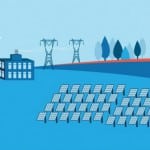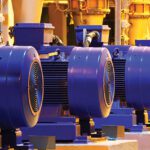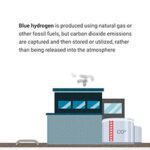Readers of a certain age will recall a scene in the movie Jaws when the local police chief, having glimpsed the gigantic shark up close from the back of the deck, reels back into the cockpit to observe: “You’re going to need a bigger boat.”
In climate change, we have reached the “bigger boat” moment. The December 2015 Paris Agreement committed 195 nations to limit global warming to 2.5 degrees Celsius, with a further aim of 1.5 degrees. That will require completely eliminating carbon emissions from the world’s energy system sometime soon after 2050. That’s virtually tomorrow in energy system terms.
Wringing all the carbon out of the system would be hard enough if world energy demand were flat. But it is slated to grow by more than half to 2050. We need a zero-carbon energy system much larger than the entire system we have today, which is 85% powered by fossil fuels and has no carbon abatement.
Cargo for the Big Boat
We have many options in theory: energy efficiency, renewable energy, advanced nuclear energy, carbon capture, and carbon removal from the atmosphere. But all of these options are, relatively speaking, in their early stages, or face real barriers to scale and cost. Most studies, from the Intergovernmental Panel on Climate Change to the United Nations Deep Decarbonization Pathways Project, have for this reason urged diversity and substantial innovation to create more and better options—in short, a very big boat. A brief look at the horizon suggests why.
Energy Efficiency. Energy efficiency has improved significantly since the 1970s. But substantial further efficiency improvements are already assumed in the growth figures cited above. While some studies have suggested flat demand, they assume annual end use efficiency improvement rates of 3% to 4% per year, while actual global improvement has averaged 1%. And recent field tests have suggested energy efficiency performance may not always match optimistic engineering estimates. An important part of the flotilla, yes. A destroyer? Maybe not.
Carbon Capture. Capturing carbon has been commercially demonstrated on gasified coal and refining for decades, and its application to electric power at commercial scale is now under way. Three projects are built or under construction in North America (see “SaskPower’s Boundary Dam Carbon Capture Project Wins POWER’s Highest Award,” POWER,August 2015). But not all fossil fuel plants can be retrofitted, and costs remain a barrier to wider adoption absent tighter carbon regulation. Advanced lower-cost power cycles that integrate carbon separation, such as NetPower’s Allum Cycle (a demonstration project is being built in Texas), are the kinds of options needed.
Renewables. Wind and solar will undoubtedly comprise a large share of the decarbonization strategy, but claims that they can provide all or most global power needs at reasonable cost should be viewed with great caution.
A variety of detailed studies, from the National Oceanic and Atmospheric Administration, to Europe’s Zero Emissions Platform, have shown that, even with the availability of low-cost battery storage, and unlimited and unconstrained transmission, very high renewable electrical systems will continue to require lots of firm, dispatchable energy for the weeks and even months when wind and solar are not available at scale. This parallel system of firm capacity will add substantially to costs.
Physical build-out also cannot be blithely assumed. A recent study calling for 100% renewable energy in the U.S. posited, just for starters, that every coastal state would have 72 offshore wind farms the size of the as-yet-unbuilt Cape Wind project (468 MW), and every state would host 50 Tehachapi-sized (705 MW) land-based wind farms.
Nuclear. Nuclear energy provides, after hydroelectric power, most of the world’s carbon-free electricity. Because of its rapid build-out of nuclear energy in the 1970s and 80s, France is one of only a handful of industrial nations that comes close to the Paris Agreement’s implied power emissions targets. But for reasons that are well-documented, repeating a French-style scale-up with current water-cooled nuclear technology is unlikely. It is typically more expensive than fossil fuel generation, making it a tough choice for firm power in developing countries; it is slower to build than coal or gas; and the need for pressurized water containment means very large amounts of concrete and steel plus long construction times with associated financing costs.
A new generation of non–light water designs is now under development that could address these problems. The use of alternative coolants substantially simplifies and reduces the size of these plants, allowing them to be mass manufactured at lower cost, like airplanes, rather than laboriously constructed on site. Many have fuel cycles needing much less host country attention, and much smaller, less-toxic, and less-weaponizable waste streams. But these options must be commercially proven, and that will not happen by itself.
Full Speed to Zero
The challenge is not easy, but it is straightforward. We need aggressive innovation and commercialization across all zero-carbon options. In particular, we need faster development of zero-carbon firm capacity options such as advanced nuclear and decarbonized fossil energy, which have to date received, comparatively speaking, almost no attention.
Success in tackling climate change is not assured. But without a diverse strategy, failure is likely. Small may be beautiful, but in this case we need a bigger boat. ■
—Armond Cohen is executive director of the Clean Air Task Force, an environmental organization that advances policies and commercial innovation to fight climate change.
[Minor edit made at author’s request 8/2/16 to statement about the number of nations that are close to meeting the Paris Agreement’s power sector emissions targets.]











